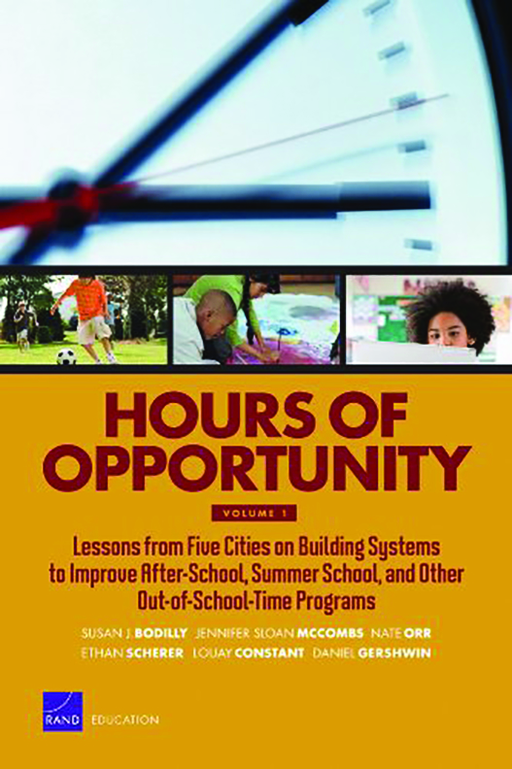- Author(s)
- Susan J. Bodilly, Jennifer Sloan McCombs, Nate Orr, Ethan Scherer, Louay Constant, and Daniel Gershwin
- Publisher(s)
- RAND Corporation
- DOI Link
- https://doi.org/10.7249/MG1037
Research Approach
For this report, researchers used a qualitative approach across all five cities. The unit of analysis was the citywide, multi-organizational initiative funded by The Wallace Foundation. The literature review of collaborative interagency reform efforts in the out-of-school time (OST) and other social service sectors further guided the development of research questions, data collection instruments, review of the literature, as well as interviews with key city leaders, leaders of community-based organizations, principals, providers, and staff at The Wallace Foundation.
Steps included:
- Developing data into case studies constructed around key descriptive and analytic categories. They factored in evidence from key individuals and reports about the history of the OST sector in that site
- Conducting a cross-site analysis to identify patterns of activities that led to greater coordination across agencies and organizations
- Examining examples of the types of activities the five cities used in their attempts to improve service provision
Each of the five cities had its own context, demographics, and organizational characteristics. They influenced the development and implementation of the initiative. The variation allowed researchers to examine coordination and system building in multiple contexts, highlighting both city-specific and shared factors that appeared to contribute to or inhibit progress.
The sites varied in a number of ways. They included:
- Size. New York City had more than 8 million residents, while Providence had approximately 175,000. At the same time, each city had a high-need student population, with more than 60 percent of students eligible under federal guidelines for free or reduced-price lunch.
- Start dates. Providence began its planning early in 2003, followed by New York City later that year; the three other sites started in 2005.
- Existing infrastructure for OST provision. For example, the city of Providence did not contribute significantly to OST programming prior to the grant, while the city governments in New York City and Chicago provided substantial funding across an array of city agencies.

